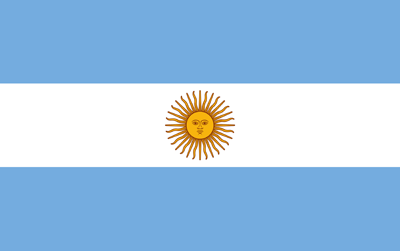Pakistan Local Cotton Market:
(Pakistan’s cotton production has plummeted by up to 60%, causing the textile industry to rely heavily on imports amid weak global demand and lower international prices. Adverse weather, pest attacks, and reduced acreage have severely impacted both the quantity and quality of local cotton. This crisis, combined with sluggish international demand, has driven prices down globally and left Pakistan’s textile sector in a challenging position, with millers increasingly turning to foreign lint).
1- The local cotton market showed firm trend due to improved business activity. Last week’s price drop was caused by reduced activity and cotton damage from ongoing rains in the cotton belt, so the current rise is more of a recovery.
2- Despite lower cotton production this season, local prices are expected to drop further as Pakistan focuses on importing cotton due to lower international prices. As per report recent heavy rains damaged the crop not only quantity-wise but also quality-wise, making the textile millers turn towards lint imports as they have so far purchased 1.171m bales against 2.615m bales in the same period last year.
3- The global demand for cotton remains sluggish, leading to a significant drop in international prices. Cotton prices have struggled to maintain the 70-cent level, falling to 67.67 cents this week—the lowest point in several months. ICE cotton prices eased due to slow demand, improved crop conditions, and weaker crude oil prices.
4- Pakistan’s textile industry is facing a severe crisis, grappling with unfavorable weather, a decline in cotton production, and weakening demand in both domestic and global markets.
5- Cotton production in Punjab and Sindh has plunged by up to 60% by August 31, forcing the textile sector to rely on costly imports. The sharp decline is due to multiple factors, including adverse weather, pest attacks, reduced acreage, and a lack of government intervention. The PCGA report says that Sindh has produced 0.773m bales this year against last year’s 1.972m bales for the same period, a drop of 61pc in the production. Likewise, Punjab registered a 58pc fall as only 0.453m bales reached the gates of ginning factories against last year’s 1.068m bales.
6- it’s claimed that the weight of the boll has been recorded at 3.34g this season against 3.29g last year, a 1.52pc increase in weight. Cotton has so far been picked from 46pc of the crop area, while last year 63pc of the crop had been picked by this time.
7- For the 2024-25 season, U.S. net sales of Upland cotton totaled 135,200 running bales (RB), each weighing 226.8 kg. The largest buyers were Pakistan (74,500 RB), India (17,800 RB), Vietnam (14,400 RB), Mexico (9,000 RB), and Thailand (5,900 RB). Sales were offset by reductions from El Salvador, Indonesia, and Japan.
8- For the 2024-25 season, in last week U.S. net sales of Upland cotton reached 207,500 running bales, with Pakistan (71,400 RB) and India (41,800 RB) as top buyers. Reductions were seen in Macau, Hong Kong, Japan, and Singapore. For the 2025-26 season, net sales of 8,400 RB were reported for Mexico and Costa Rica. Exports totaled 164,100 RB, primarily to China, Pakistan, and Vietnam.
9- Last week, cotton prices in Punjab and Sindh showed firm trend from Rs 17,800 to Rs 19,500 per maund, (USC 0.78~0.85 lbs). In Sindh, cotton rate was Rs 17,800 to Rs 18,800 per maund, while in Punjab it ranged from Rs 18,400 to Rs 19,500 per maund. KCA lost 700 Rs and came at the of.18,300 Rs per maund, PSF also dropped Rs. 2 to at at Rs. 360 PKR/kg.
Local Yarn Market:
(The local yarn market stagnates. Rising costs and import pressure squeeze prices. Suppliers struggle with inventory and face economic headwinds. Yarn prices firmed due to higher cotton costs but remain under pressure)
1- The local yarn market showed a stable trend this week, with average business activity. While spinners have increased their yarn price offers, they remain open to negotiations with buyers.
2- Suppliers continue to navigate a challenging landscape, balancing low inventory levels against escalating energy and production costs.
3- PSF prices have remained stable this week, but a further decline of Rs 5-7/kg is anticipated next week.
4- Faisalabad’s market experienced subdued activity, particularly in viscose and fine-count yarn sectors. Cash flow constraints persist, hindering business operations.
| Count | Price in Pak Rupees / 10 LBS | Price US$/Bale |
| 16/1 Carded Weaving | 3300 – 3400 | 480 – 490 |
| 20/1 Carded Weaving | 3400 – 3500 | 490 – 505 |
| 30/1 Carded Weaving | 3800 – 3920 | 550 – 565 |
| 20/1 Combed Weaving | 3850 – 4000 | 555 – 580 |
| 30/1 PC Carded Weaving 52:48 | 3200 – 3500 | 465 – 505 |
| 40/1 Combed Compact Weaving | 4425 – 4550 | 640 – 660 |
| 60/1 Combed Compact Weaving | 5900 – 6100 | 855 – 885 |
| 80/1 Combed Compact Weaving | 8000 – 8200 | 1160 – 1185 |
| 40/1 CVC Carded Weaving 60:40 | 4000 – 4150 | 580 – 600 |
Export Yarn Market:
(Export yarn market showed improved business activity as customers form all the regions. Customers floated good numbers of inquiries against which orders were matured too. We might see another buying spree in days to come)
1- This week, the export yarn market experienced an improvement in activity, driven by Chinese customers actively exploring prices, although business confirmations were somewhat limited.
2- Continued interest from Chinese customers led to the finalization of several deals with selected brands.
3- Suppliers held firm on their pricing but showed eagerness to close deals with solid bids.
4- A strong domestic market provided support, preventing suppliers from resorting to panic selling in the export sector. Meanwhile, new cotton arrivals are on the rise but due to the rains and damage of cotton, the prices were increased due to which supplier also increased their prices.
5- On the other hand, European customers are back from holidays and actively checking prices for their next buying. It is expected that deals will mature in days to come as demand seems good.
| Export Yarn Prices | ||||||||||||||||
|
Local Fabric Market:
(Local dyeing units were inactive during the week however the local brands were active and placing bulk order after hard negotiations. For the coming weeks, we anticipate the market to continue experiencing limited trading activity, but an improvement in business activity is expected)
1- The local fabric market exhibited slow sentiments throughout the week, with no bulk inquiries for both narrow and wider-width fabrics.
2- Finishing mills remained on the sidelines, unable to share bulk inquiries however local brands continued to engage in the market, placing orders after tough negotiations at last week’s price levels. Consequently, limited trading activity was reported for both narrow and wider-width fabrics.
3- Home textile units have good booking hence they were engaged to keep on placing orders in local market based on conversion mainly with Sulzer looms.
4- Major weavers have bookings for narrow-width looms until mid-October 2024, while wider-width looms are booked until mid-November 2024, with onward deliveries being offered.
Export Fabric Market:
(Improved business activity was observed in export fabric from Far Eastern and European markets. The prices were stable both in narrow and wider width. Suppliers are expecting further orders from mid-September onward)
1- Modest business activity was seen in the export fabric market.
2- Customers from Korea, China, Japan and Indonesia exchanged their inquiries, resulting in decent quantity booked with selected suppliers.
3- Asking prices remained stable since last couple of months due to stable raw material prices.
4- Suppliers are booked till mid-October and offering end-October onward deliveries.
5- European and USA buyers were active after summer holidays as they exchanged a good number of inquiries, resulting in reasonable quantity booked both in narrow and wider width fabric.
6- Suppliers are importing big volume of fine-count yarn to make their fabric prices competitive, thus successfully getting good orders mainly for wider width fabric.
7- Wider width suppliers are booked till mid of Nov and offering end Nov onward deliveries.
| Local and Export Fabric Prices
| ||||||||||||
|
Bed Linen and Towel:
(Home textile sector got good orders thus they were engaged managing their production and outsource the weaving mainly with Sulzer units. The inquiries are expected to rise further resultant more booking however, the external factors like inflation, high energy costs, and the absence of government relief continue to pose significant obstacles to the industry’s growth)
1- This week, the home textiles sector continues to experience stable production trends.
2- The capacity utilization of vertically integrated units remains steady, ranging from 70% to 80%, with both processing and stitching lines maintaining consistent output.
3- Most production lines are fully booked through October, leading some factories to outsource parts of their production to meet deadlines while earlier orders were secured at competitive price points, some manufacturers are facing challenges with profitability, as post-production financials reveal tighter margins than initially projected.
4- Following a slower period due to the European holiday season, customers have now largely returned to regular operations.
5- We expect the flow of inquiries to gather momentum after 15th of September, with a higher probability of significant order confirmations.
6- Inquiries submitted prior to the holiday season have created a backlog, and many of these pending confirmations are likely to materialize into firm bookings over the coming weeks. The next two weeks should see an uptick in renegotiations and new orders, with the potential for a strong wave of confirmations by the end of the month.
7- The home textiles industry continues to face persistent challenges, particularly with regard to rising operational costs. Energy prices remain high, inflationary pressures are growing, and overhead costs are further squeezing margins. Tight price points and stringent delivery targets are placing additional strain on manufacturers.
8- Furthermore, the lack of critical governmental support—such as tax reliefs, energy cost reductions, or lower borrowing rates—remains a major issue. These factors continue to hamper the competitiveness and overall performance of production houses, making it difficult to navigate the global market effectively
Garments:
(Because of global economic uncertainty, garment demand is often slow but it’s going towards improvement. Orders from the EU and the US were increased. The denim industry anticipates orders for sustainable products during the fourth quarter)
1- Overall, Pakistan’s clothing industry is experiencing unequal commercial activity, and manufacturers are not receiving enough orders to fill their 100% production capacity. Because of inflation, several retailers and brands have curtailed their purchases.
2- Normally, factories receive projection-based orders from large retailers in the current season, but the market sentiment has bit slowed in the 2nd quarter of 2024 compared to factories’ expectations, owing in part to global inflation.
3- For onward orders, factories are proposing deliveries by the end of Nov 2024.
4- In the clothing business, sustainability is crucial for lowering environmental impact and enhancing working conditions.
5- As far as denim, the global market is still fighting inflation and trying to revive yet the manufacturers are hopeful for the upcoming seasons as consumer still has a good amount of demand for a sustainable
Crude Oil:
1- Crude Oil prices opened at USD 70.34 with lower level as compared to last week closing figures. in this week, crude oil prices showed downward trend and closed on lower side by the end of week.
2- In last day of the week, Crude Oil price closed at USD 67.67 with decrease of 2.67 USD cents as of opening figure of week
| Opening of Week | Closing Of Week | Change | |
| Price | 70.34 | 67.67 | -2.67 |
Exchange Rate:
1- In last week values of Pak rupee appreciated against US Dollar’s, other major currencies showed mix trend in both interbank and open markets.
2- At the end of week, Euro closed on a negative note with figure of 1.10 and British Pound also closed on negative note with figure 1.31 against USD.
| Selling | Buying | |
| LC Sight | 276.40 | 276.35 |
| LC 120 Days | 263.08 | 263.03 |
| Open Market | 281.08 | 275.76 |
New York Cotton Future:
The New York Cotton futures started the week higher than the previous week’s closing figures. However, NYCF showed a mix trend in this week and closed on lower side by the end of week.
1- October 2024 closed at 67.12, experiencing a decrease of 364points from the previous week.
2- December 2024 closed at 67.88 showing a lower trend of 262 points from the previous week.
3- March 2025 closed at 69.69, decrease by 252 points from the previous week.
4- May 2025 closed at 71.02, drop of 237 points from the previous week.
Liver Pool Indices:
Liverpool Index A was opened at 81.20 on same levels from the previous week of closing figure.
In this week Index “A” showed mix trend and closed on lower side by the end of week.
At last day of the week, LPI “A” closed at 81.05 with a decrease of 15 points.
| Opening of the Week | Closing of the Week | Change | |
| Index A | 81.20 | 81.05 | -0.15 |







